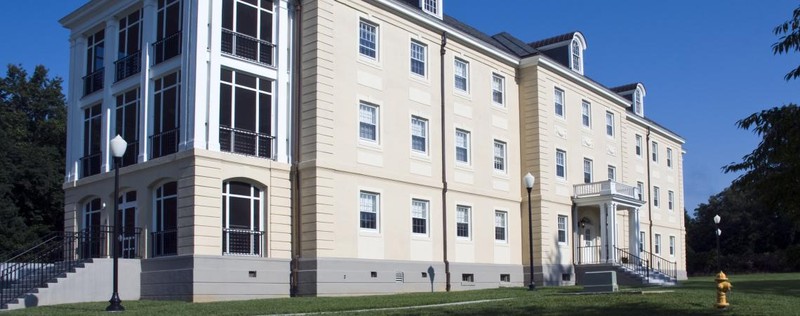Veterans Administration Nurse’s Quarters
Introduction
Text-to-speech Audio
Images
2014

1970s

Backstory and Context
Text-to-speech Audio
Listed in the National Register of Historic Places in 1985, the Asheville, North Carolina Veterans Administration Hospital Historic District and its associated buildings are significant as one of the largest and best equipped tuberculosis hospitals in the nation in their time. Constructed between 1924 and 1940, the buildings within the complex exhibit Georgian and Colonial Revival styles and remain one of the most intact collections of such architecture in the region. Within the Historic District are hospital wards, officers' residences, an administration building, a clinical building, apartment houses, and nurses' dormitories.
In 1918 US Army General Hospital No. 19 opened in Asheville to serve the soldiers in the area who were training for duty for World War I. When the U.S. Veterans' Bureau was created three years later, the hospital became part of that system. From 1924 to 1930 the early wooden structures were replaced with more substantial buildings. The Veterans' Bureau was replaced by the Veterans' Administration (VA) in 1930, and despite the economic difficulties of the 1930s, the VA system and this complex continued to expand. Throughout this period, the primary focus was the treatment of tuberculosis, and this complex was the only VA hospital in the southeast devoted to the treatment of respiratory ailments. Following the successful development of chemotherapy treatments in the early 1950s, the Asheville hospital diversified into a comprehensive medical center. In 1967 a new hospital complex was built adjacent to the original site.
The former Black nurses’ dormitory was completed in 1932. The interior of the former dormitory was extensively renovated during the 1970s by Western Carolina University for use as classroom space. The exterior of the building was restored in the mid-1980s. From 1978 to 1996, part of the building housed the Western Office, Division of Archives and History, North Carolina Department of Cultural Resources (NCDCR). In 1997, the property was transferred to the State of North Carolina and specifically the NCDCR through the Historic Surplus Property Program. The department undertook an extensive rehabilitation from 2009-11 to repurpose the building as an archival records center for western North Carolina.
